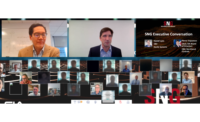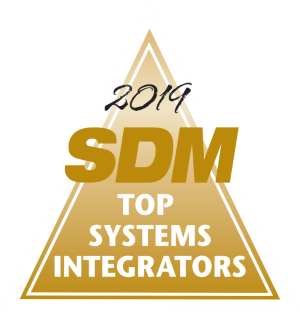At Securing New Ground (SNG), a Security Industry Association (SIA) executive conference held October 26 and 27 in New York City, SNG conference speakers and participants discussed the impact some of the highest level trends will have on security dealers and integrators as well as the industry as a whole.
SIA had previously identified the 10 megatrends for 2017 as IoT; cyber security threats; smart buildings/big data; GSOC evolution; transformation of integrators; return of strategic acquirers; mobile tech; cloud computing; social media; and DIY or do-it-with-me. Many of the presentations at SNG revolved around one or more of these megatrends, beginning with the opening keynote delivered by Rose Littlejohn, managing partner-business services for PricewaterhouseCoopers. Her presentation on “Changing Times, New Opportunities,” set the tone for the event, with this theme coming up again and again in many of the discussions.
“Megatrends guide how we run our business,” Littlejohn said. “Understanding what they are and how to respond is not a one-year strategy; it’s often a three- to five-year strategy.” She called on industry leaders to be brave and take a leap, whether into the world of cyber, IoT, or just a different focus on how security can be more involved in the business decisions companies make. “It takes one brave leader who is willing to take a risk and say, ‘If we don’t do this now, we are going to be left behind. We aren’t going to be relevant, and we aren’t going to be in business for long.’”
The topic of transformation was front and center with the first panel on “Security Megatrends: The Forces Transforming our Culture.”
Speaking about IoT devices, Rob Martens, futurist and vice president, Allegion, called the residential security world the “development playground” of the industry, predicting it would reach the general commercial space in the near future. “There is a gap emerging between what is possible and what is doable. You can’t live in the residential world unless it is easy to deploy lights, locks and thermostats. The bar is going up on ease of use.”
Fredrik Nilsson, vice president Americas, AXIS Communications agreed, adding, “Right now we don’t need to act like an IoT device because we have our own networks. But those devices can be connected to the Internet and it is only a matter of time. We need to be prepared, because it will be eventually.”
This led to discussions ranging from big data getting a boost from lower sensor costs, to the role artificial intelligence will play in the future, to cyber security.
“The cyber security discussion has been going on for many years, but it was not on top of the agenda five years ago,” Nilsson said. “Now it is. All of a sudden it is being taken very seriously.” He added, however, that it is far from mature in the security industry right now.
Cyber security was one of the most consistent themes, showing up in nearly all of the panel discussions in some way or other. “It is interesting more of us are initiating this conversation,” observed Ken Lochiatto, president and CEO, Convergint Technologies in a panel titled “SIA Leaders Speak: Catalysts for Growth and Opportunity.”
Herve Fages, vice president, connected buildings, Honeywell, added, “Cyber security is a threat from the manufacturing side. We all say it with fear, but I believe if we embrace it, we can generate new business… and have the opportunity to start selling new services, creating a great RMR model.”
One of the more interesting panels at the event came from the end-user perspective. “What Security Directors Wish You Knew” asked four heads of security about the impact of some of these megatrends and what mattered most to them. Almost all pointed to the biggest factor in the success of their security department — the human factor.
What does this mean for the higher level of discussion on technology trends? Lauris Freidenfelds, director of security services and emergency management, RUSH University medical center, had this to say to integrators: “The weakest link is the person that is delivering, installing and supporting the system. If they don’t know how to help me make it sing, it is worthless. There is no use giving a kid some toys if we don’t know what to do with them.”
Robert Raft, president, Stanley Security North America struck a similar note in a second-day session titled “Emerging Models for Subscription Services,” noting that it is about the right information at the right time. “It means being proactive and being a different type of partner than maybe what we were before.”







